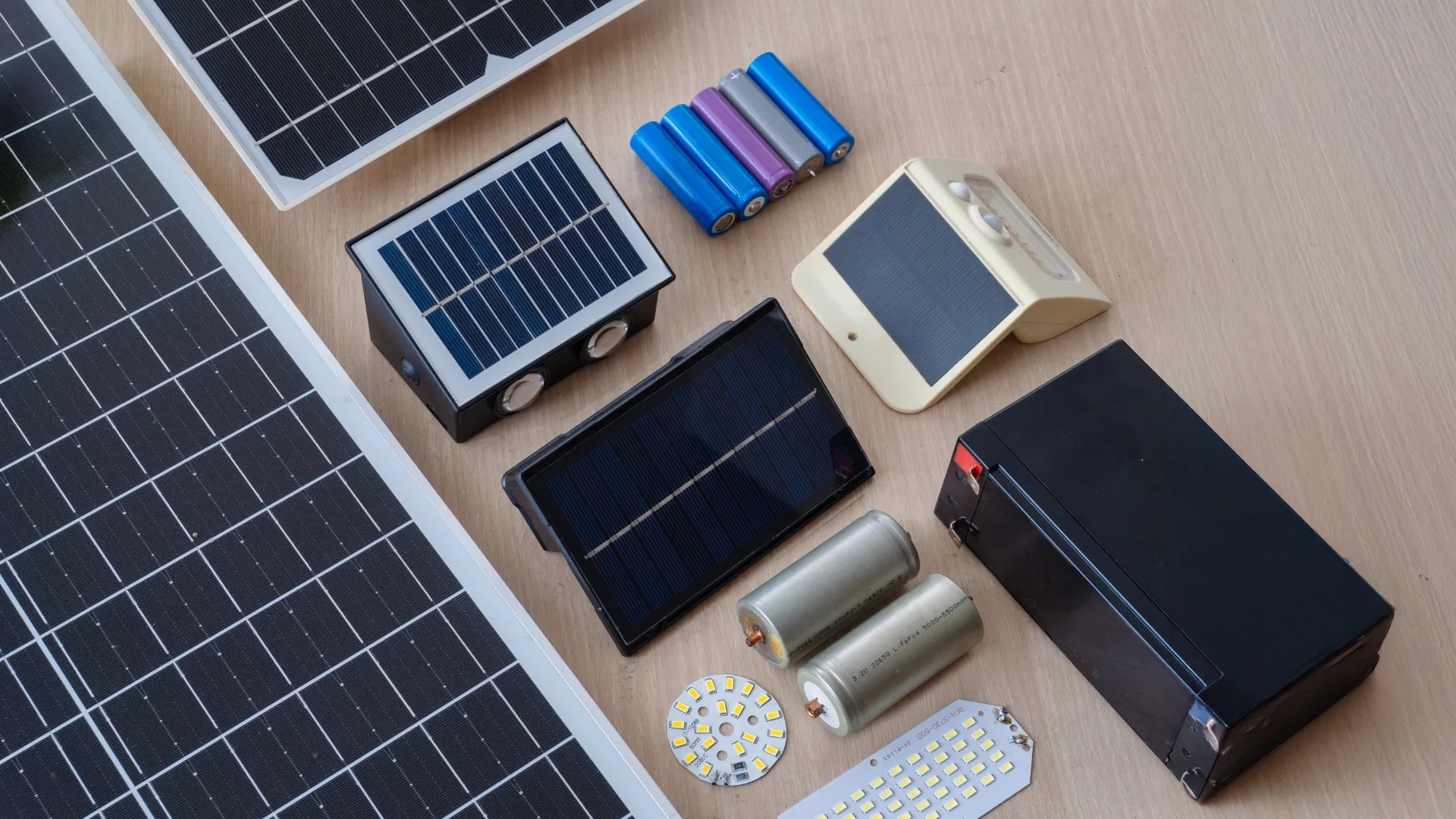Best Home Battery Backup Systems for Waterspouts Preparedness in 2025
Late summer and early fall in Canada bring peak waterspout activity along the coasts and the Great Lakes. Though typically less destructive than large land tornadoes, these violent columns of wind and water can still damage homes, disrupt infrastructure, and knock out power for days. Preparation goes beyond monitoring weather alerts — it means ensuring your home has a reliable backup power system in place. This guide explains the risks, shares practical safety tips, and highlights the best home battery solutions to keep you safe, comfortable, and connected when the grid goes down.
Waterspout Risks
Waterspouts are a weather hazard that many Canadians overlook. Unlike tornadoes, which develop over land, these rotating columns form over lakes, rivers, or coastal waters. While often smaller in scale, they can pack similar destructive power, especially if they move ashore. For coastal towns, lakeside communities, and boaters, the combination of intense winds, heavy rain, and sudden landfall can threaten homes, damage infrastructure, and disrupt daily life in an instant.
Peak Season & Locations
In Canada, the prime season for waterspouts runs from late summer into early fall, when warm, moisture-rich air over large lakes or coastal waters collides with cooler air masses. This mix creates the perfect recipe for waterspout formation. The most at-risk regions include the Great Lakes, particularly Lake Erie and Lake Ontario, as well as the Atlantic and Pacific coasts. In some areas, it’s not unusual for a single storm season to produce multiple waterspout events, underscoring the need for year-round awareness and a solid preparedness plan.
Impact on Homes
Although waterspouts generally lack the sheer destructive force of an F5 tornado, they can still cause serious damage, especially to homes along the coast or near large lakes. High winds can tear away shingles, break windows, and damage siding, while flying debris poses a direct risk to structures and occupants alike. Storm surges or intense rainfall associated with waterspouts can also lead to flooding, compounding the damage and making recovery more challenging. For homeowners in vulnerable areas, strengthening your property and preparing for potential power outages is an essential part of waterspout readiness.
High Winds
The powerful gusts generated by a waterspout can be strong enough to rip shingles from roofs, smash windows, and topple outdoor structures such as sheds, gazebos, and docks. Even moderate-strength winds can cause costly damage if structures aren’t built to withstand them.
Flying Debris Hazard
As waterspouts travel, they can lift water, small marine life, and unsecured items from shorelines, turning them into fast-moving projectiles. Even relatively light debris can cause serious injury or property damage when propelled by strong winds.
Coastal Power Outages
Power outages along Canada’s shorelines often last longer than those inland, as repair crews face the added challenge of working around damaged infrastructure near the water. With multiple outages possible in a single storm season, residents may face extended waits before service is restored.
Flooding Risk
Heavy rainfall and storm surge from waterspouts can flood low-lying shoreline areas, damaging homes and electrical infrastructure like transformers and utility poles. Flooding not only complicates repairs but can also make restoring power safely a longer process.
How to Prepare for Waterspouts
In Canada’s coastal and Great Lakes regions, a proactive approach is the best safeguard against waterspout damage. While these storms can form with little warning, there’s a lot you can do ahead of time to protect your home and family.
Early Warnings
Monitor Weather Alerts:
Stay alert to changing conditions by keeping a close eye on Environment Canada’s marine weather alerts. These bulletins are a vital resource for anyone living near the coast or the Great Lakes, offering up-to-date information about wind patterns, storm systems, and other factors that can lead to waterspout formation.
Secure Outdoor Items:
Ahead of an approaching storm front, take the time to bring in or firmly anchor anything that could become dangerous if lifted by high winds. This includes patio furniture, barbecues, garden tools, bicycles, and trash or recycling bins. Even smaller items can turn into high-speed projectiles during a waterspout. Ensure all windows and doors are closed and properly sealed to prevent wind-driven rain from entering your home
Charge Your Home Battery:
One of the most important parts of waterspout preparedness is ensuring your home battery backup system is topped up well before the storm season ramps up. Don’t wait for an Environment Canada warning to plug it in, build a home battery backup system for your regular household routine during late summer and early fall. A fully charged system gives you a reliable cushion of power for lighting, refrigeration, and communication if the grid goes down. This proactive step is especially crucial for coastal and lakeside communities where repairs may take days, or even weeks, after severe weather.


During a Waterspout
If a waterspout is spotted near the shoreline, or if Environment Canada’s marine weather alerts indicate one is likely, act immediately to safeguard yourself and your household.
Stay Indoors
If a waterspout is approaching, head inside immediately and stay clear of all windows and glass doors. The safest spot in your home is a basement, an interior room, or a closet on the lowest level, ideally with no exterior walls.
Avoid Shoreline and Open Water
Never try to watch or record a waterspout from the shoreline or while out on the water. These swirling storms can change direction quickly and travel faster than they appear, putting you in harm’s way with little warning.
Relocate RVs or Boats
If you own an RV or a boat, it’s best to move it well ahead of a storm front to a secure location outside the projected path of the waterspout. RVs should be parked on stable ground away from trees and power lines, while boats should be taken to a sheltered harbour or dry dock.
Power Outage Planning
Having a detailed plan for a power outage is essential in coastal communities, where outages can last several days or even weeks after a severe waterspout event.
Choose a Reliable Backup
Opt for a home battery backup system that can keep your most essential household functions running smoothly for at least 24–48 hours. This includes powering lights, keeping your refrigerator cold to prevent food spoilage, maintaining internet access through your Wi-Fi router, and ensuring critical medical equipment such as CPAP machines continues to operate without interruption.
Consider Recharging Options
For coastal households, choosing a home backup system with solar recharging capability can be a real advantage. Even if the grid stays down for days after a storm, solar panels give you the ability to generate your own electricity and keep essential devices running. This not only extends your system’s usefulness but also adds a layer of independence, ensuring you’re not entirely reliant on fuel deliveries or repair crews to restore power.
Assess Your Needs
Before investing in a home battery backup, take the time to identify which appliances and systems are truly essential during an outage. A full-sized refrigerator will draw significantly more power than a compact model, while electric heating systems can quickly consume stored energy. Consider critical items like sump pumps, medical devices, and communication equipment, and calculate their combined power requirements. This will help you choose a battery system that can handle your specific load without running out of power when you need it most.
Best Home Battery Backup for Waterspout Season
Selecting a home battery backup for waterspout season requires balancing power, reliability, and resilience against harsh coastal conditions. The ideal system should deliver enough capacity to keep essentials like lights, refrigeration, and communication equipment running through extended outages, while also being durable enough to handle high humidity, salt air, and fluctuating temperatures. Long cycle life and the ability to recharge quickly preferably via solar are essential for maintaining independence when repair crews are delayed.
What to Look For
After you’ve determined your essential power needs and mapped out a backup plan, the next step is selecting the right system to keep your home running when the grid goes down. While there’s no shortage of home battery backups on the market, the reality is that many fall short when it comes to handling the unique demands of waterspout season. Coastal storms bring a mix of high winds, heavy rain, and prolonged outages, so your equipment must be rugged, dependable, and capable of delivering steady power for as long as it’s needed. Focusing on the right features now ensures you’ll have a system you can count on when conditions turn rough.
24–48 Hours of Runtime
In coastal communities, power outages can easily stretch beyond a single day, sometimes lasting several days if storm damage is severe. That’s why a backup system with at least 24 to 48 hours of power is the baseline recommendation for waterspout preparedness. This buffer ensures you can keep essentials like your refrigerator, lighting, and communication devices running, while also buying valuable time for utility crews to restore service. Having that extra window of reliable power can make the difference between a manageable inconvenience and a real emergency.


Sufficient Output
The output capacity of your backup system is measured in watts which determines what you can realistically power during an outage. It’s not just about keeping devices running; it’s about handling the initial surge when appliances like refrigerators or sump pumps kick on. If the system can’t handle that spike, it risks overloading and shutting down. A higher-wattage system ensures you can run multiple critical devices at the same time without interruption, keeping your home functional and comfortable when it matters most.
Portability
When flooding or storm damage is a risk, being able to quickly move your backup battery can make all the difference. A portable unit means you can relocate it to higher floors if water rises, or simply shift it to where power is needed most. Look for designs with built-in wheels, sturdy casters, and ergonomic handles; these features turn a heavy, high-capacity battery into something you can move with ease, even in urgent situations.
Low-Temperature Operation
In Canada’s diverse climate, a battery backup that performs reliably in the cold it’s essential. As temperatures drop, battery efficiency naturally declines, making it harder to power your home when you need it most. Advanced systems with built-in battery heating help maintain safe, efficient performance even in sub-zero conditions, so your backup is ready whether it’s stored in an unheated garage, shed, or basement.
Surge Protection
Waterspouts are often accompanied by powerful lightning storms that can trigger sudden and dangerous power surges. A high-quality home battery backup system with built-in surge protection acts as a vital safeguard, shielding your most valuable electronics from unexpected voltage spikes. This added layer of protection is essential for preserving sensitive devices like computers, smart appliances, and entertainment systems during storm season.
Top Picks for Canada
With the right mix of capacity, output, portability, and resilience, a reliable home battery backup can be the difference between a minor inconvenience and a serious disruption during waterspout season. Based on these criteria and keeping in mind Canada’s unique coastal and Great Lakes challenges, several systems stand out for 2025. These top picks deliver dependable power, weather resistance, and the runtime needed to keep your household running when the grid goes down, setting the stage for a closer look at some of the most advanced options on the market today.
Best Overall for Large Homes – EcoFlow DELTA Pro 3
Picture this: a sudden waterspout knocks out power in the middle of a hot, humid Canadian summer. With the EcoFlow DELTA Pro 3, you won’t be left choosing between running your fridge or your central AC. Delivering a solid 4000W of output boostable to 6000W, it handles multiple high-demand appliances at once. Its capacity starts at 4kWh and can expand to an impressive 48kWh, giving you the flexibility to power through anything from a brief outage to a full week off-grid. The EV-grade LFP battery is built for the long haul, maintaining 80% capacity even after 4000 cycles. Thanks to lightning-fast charging, you can go from empty to 80% in just 50 minutes, which is perfect when a storm warning comes with little notice. And with wide wheels and an ergonomic handle, it’s as portable as it is powerful, ensuring dependable power wherever you need it most.
Best Whole-Home Backup – EcoFlow DELTA Pro Ultra
When you need to power your entire home, the EcoFlow DELTA Pro Ultra is a top-tier choice. It’s the only portable power station certified to both UL1973 and UL9540, delivering industry-leading reliability. Its 7.2kW to 21.6kW output can handle demanding appliances including a 3-ton central AC during a hot, humid waterspout event. With an expandable capacity from 6kWh to an impressive 90kWh, it can keep your home running for days or even weeks, depending on your energy use. For optimal performance and safety, installation with a qualified electrician is essential. Keep in mind that while the system is designed for whole-home backup, excessive power draw or overloading may limit how long it can support all devices simultaneously. Paired with the Smart Home Panel 2, it offers a near-instant switchover during outages to protect sensitive electronics. With five charging methods and rapid solar input capable of delivering a day’s energy in just one hour of sunlight, it’s built to perform in extreme Canadian conditions from –20°C to 45°C and offers over 3,500 cycles with its advanced LFP battery technology.


Maintenance Tips
Regular upkeep ensures your home battery backup system will perform reliably when the lights go out. Check the battery’s charge status monthly and top it up if it has dropped below the manufacturer’s recommended level. Keep the unit clean, dry, and stored in a cool, well-ventilated location to prolong its lifespan.
Regular Charging
One of the simplest yet most important ways to extend your battery backup system’s life is to keep it topped up. Aim to recharge the unit every three to six months, even if you haven’t used it. This prevents a full discharge, which can significantly shorten battery lifespan.
Store Indoors
To protect your battery backup system, especially during Canada’s harsh winters; store it in a heated, climate-controlled space. Extreme cold can reduce battery performance and shorten its lifespan, so avoid keeping it in an unheated garage, shed, or vehicle.
Use Surge Protection
Even if your backup system includes built-in surge protection, adding a high-quality, dedicated surge protector is a smart extra layer of defense. Plug sensitive electronics like computers, modems, or home office equipment into the surge protector rather than directly into the unit.
FAQ
What’s the difference between a waterspout and a tornado?
The main distinction comes down to where they form. Waterspouts develop over bodies of water often in warm, humid conditions and are generally weaker than tornadoes. Tornadoes, on the other hand, form over land and are typically more powerful and destructive. While waterspouts may not match the intensity of a strong land-based tornado, they can still cause serious damage, especially if they move onshore into coastal communities.
What’s the best battery backup for a home power outage in Canada?
The ideal backup system for a Canadian home really depends on your specific needs. If you’re looking to keep essential devices like your fridge, lights, and Wi-Fi running, a high-capacity portable power station such as the EcoFlow DELTA Pro 3 offers an excellent balance of output, runtime, and portability. For those who want full home coverage, a modular solution like the EcoFlow DELTA Pro Ultra is hard to beat, it can be integrated directly into your home’s electrical panel for seamless, automatic backup when the grid goes down.
How long will a 10kW battery power a house?
A 10kWh battery stores 10,000 watt-hours of energy. How long it can run your home depends entirely on your electricity use. For reference, a typical Canadian household runs only essentials like the refrigerator, lighting, and Wi-Fi, which might use between 1,000 and 1,500 Wh per hour. At that rate, a 10kW battery could provide roughly 6 to 10 hours of power. If you want to keep your home running for a full 24 hours without recharging, you’d need either a larger battery system or a plan to significantly reduce energy consumption.